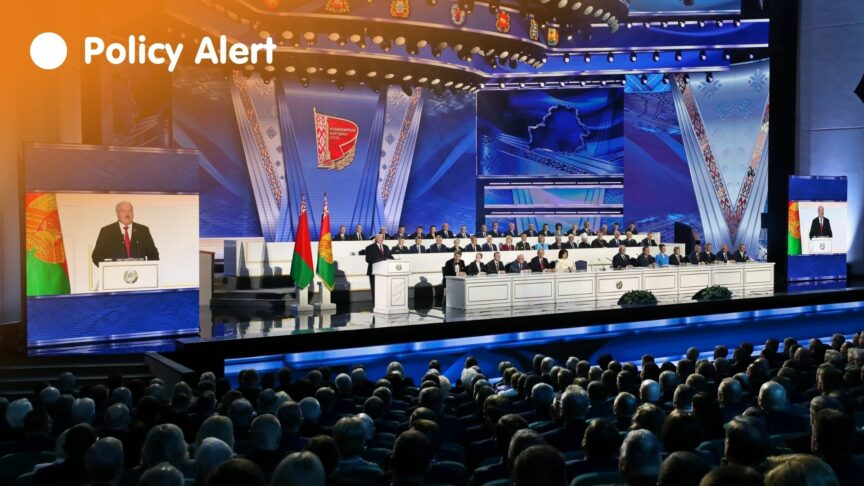Lukashenka’s long shadow: Understanding Belarus’s new political architecture
A new governing body
On 24 April, Belarus held the inaugural congress of the All-Belarusian People’s Assembly (ABPA), a newly formed constitutional body resulting from a pseudo-referendum in 2022. The assembly, based on the principle of government corporatism and made up of carefully chosen loyalists, has the power to overturn decisions made by other state bodies, including the government and parliament. Its creation was heralded by the Belarusian leader, Aliaksandr Lukashenka, as a stabilising force for the political system and necessary for the preservation of “Belarusian ideology” after his departure from power.
However, Lukashenka does not seem to be leaving anytime soon. His candidacy for the chairmanship of the ABPA was the sole nomination, receiving approval from 99.91 per cent of the delegates – only one voted against. Lukashenka now holds two posts at once – president[i] and chairman of the ABPA, making him able to observe and control his own activities from two different chairs.
In addition to appointing a chairman, the assembly also formed a presidium—a collegial governing body. Prior to the congress, observers speculated Lukashenka’s high-ranking inner circle for the positions.[1] But even here he played it safe by choosing individuals with limited political stature. This suggests that the presidium will have a largely symbolic role, providing yet another space for Lukashenka’s absolute power.
Power play
As his deputy in the ABPA, Lukashenka appointed Aliaksandr Kosinets, former head of the presidential administration and one of his most loyal supporters. This marks the first instance of direct deputyship under Lukashenka’s reign. While Kosinets’s position does not give him a formal second rung in the hierarchy of Belarusian power, informally his new status gifts him a huge list of powers to carry out the instructions of his boss. Kosinets has a very dubious reputation among Belarusian officials for his zealous implementation of Lukashenka’s mandates and aggressive communication style, earning him the behind-the-back nickname of a “headless horseman”.[2]
It remains to be seen exactly how the ABPA will exert influence over Belarusian politics. And while Kosinets’s appointment suggests a substantive role, the true measure of his influence will emerge in the forthcoming battles within Belarusian government agencies. However, the birth of the ABPA will allow Lukashenka to demo-test if his idea of creating a “collective Lukashenka” in the form of this new body can preserve the regime after his departure. If it fails the test, he can always abandon the idea, make the ABPA as decorative as the current parliament, and try to find another solution to ensure his legacy remains long after him.
The test of time
The current version of Belarus’s constitution allows him to combine both positions until 2035, when he will turn 81. Lukashenka also confirmed that he will run in the presidential “elections” in 2025, “if the people ask him to do so.” Considering the peculiarities of the country’s political structure and the Stalinist level of repression in modern Belarus, there is no doubt that the people will “ask” Lukashenka exactly what Lukashenka himself wants.
[1] Based on author’s discussions with Belarusian political analysts, February 2022 to April 2024, Warsaw.
[2] Based on author’s experience in the Belarusian government, 2014-2020, Minsk.
[i] Lukaskenka is widely recognised as the illegitimate ruler of Belarus after his crushing defeat in the presidential election 2020.
The European Council on Foreign Relations does not take collective positions. ECFR publications only represent the views of their individual authors.
